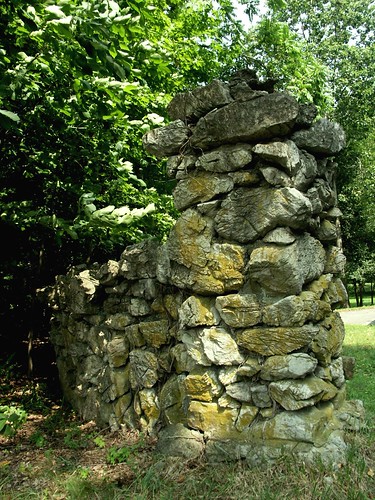The Kenyon Estate and Boardman Road
July 22, 2010 by admin

Anyone who has ever gone along Boardman Road will have seen the attractive “Cliffdale” estate. Also known as the Kenyon House, the estate is currently occupied by the Poughkeepsie Day School.
The impressive 23-room house was built between 1909 and 1913 by the famous raincoat and tire manufacturer Clarence Kenyon. After his death, the property was inherited by his daughter Helen Kenyon, Vassar graduate and chairman of the Board of Directors for the college for ten years. In 1944, the property was purchased by IBM in order to accommodate a modern research and engineering laboratory.
Phyllis Teasdale, also a Vassar graduate and resident of Boardman Road, told us what she remembers of the Kenyon House before it was bought by IBM:
It was where they lived; it was the homestead of the Kenyon family. He was an industrialist and he manufactured something that I think was needed in World War I, so he made a fortune that way. They built themselves this very fine mansion. And all the land around it – you may have noticed, there’s a whole complex of yellow stucco houses— that’s where the chauffeur lived and livery stables and maids’ quarters and that kind of thing.
Helen Kenyon was very fond of my older sister and asked her if she would like have her engagement party on the porch, and why not? It’s a beautiful house. We were a little distressed when IBM bought and we thought, “oh dear, are they going to turn it into an office complex?” But they at least left the exterior and much of the interior intact. And then, of course, the Poughkeepsie Day School took it over, so that one house has had quite a history.
Before it started to be developed in the 1950’s, Boardman Road served as the entrance to the Kenyon estate. In fact, you can still see what remains of the stone pillars that supported the gates halfway down the road. Chris Teasdale, Phyllis Teasdale’s son, told us what became of another set of pillars:
There were two at the entrance of 376, but the County or the City must have knocked them down for road improvement. But you can still see the stone pillars right before you get to what was IBM and is now Our Lady of Lourdes [High School]. They were grand stone pillars. Recently, the one on the east side was knocked down by the City because one of the residents said there was a sight distance problem for vehicles. He thought that they would move the pillar but they came and knocked it over. And two years later they moved the road, so they didn’t even have to knock it down. But you get a sense that these were massive stones of the old, grand stonework.
David Page also grew up on Boardman Road. He remembers that, at the time, the area was still surrounded by pastures:
On Boardman Road there were three houses in a circle and one of them was my father’s, one of them was a machine shop with some people living upstairs, and one of them was where the tractors and things were.
Just to the west of that were IBM’s cattle. At the other end of IBM’s cattle were Vassar’s heifers. As a youngster I had to get through these two pastures to get to the creek. I was afraid of those cattle because when they saw you they’d run up to you. I didn’t know that they probably weren’t going to do anything. So we had a lot of adventures getting past them. We’d wait until they weren’t looking. There was also a cabin there, a Vassar cabin with a horse trail that went to it.
Years later, in the 1960’s, Chris Teasdale remembers sledding on the hill next to Spackenkill Road that was once all pasture. “When you’re little, everything is so much bigger,” he recalls. “This was like an Olympic bobsled course.”
Ed Lynch, another watershed resident, also spoke of sledding on that hill. Apparently, it is now owned by the Assembly of God church, which has controversially planned to build a “monster church” there.
Information from:
Poughkeepsie New Yorker, IBM Buys Kenyon Estate, “Cliffsdale, July 1, 1944
Image from:
Ghee, Joyce C. and Spence, Joan. Poughkeepsie, 1898-1998. A Century of Change. NY: Arcadia Publishing(Sc), 1999
